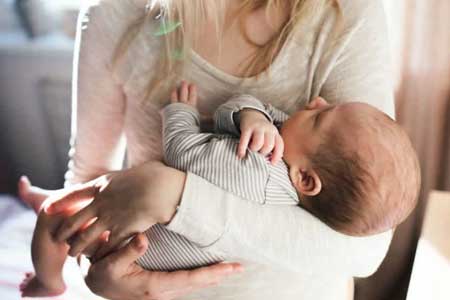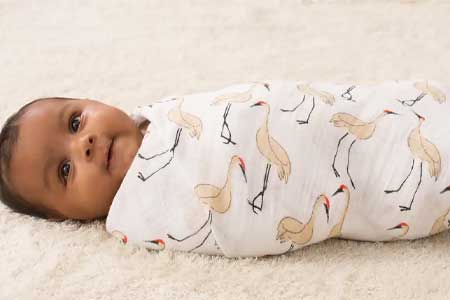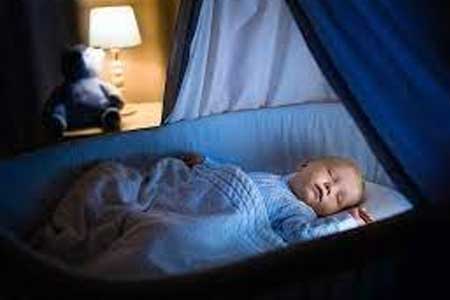How To Get A Newborn Sleep In A Bassinet?

Welcoming a newborn into the family is one of the most exciting experiences for parents. However, it is no secret that newborns can be fussy and difficult to soothe, especially when it comes to sleeping in a bassinet. It is commonly seen that babies cry during their sleep, and parents often struggle to find ways to soothe them. But, fear not! There are several tips and techniques that parents can use to help their newborns sleep soundly in a bassinet.
In this article, we will discuss some effective tips and tricks for getting your newborn to sleep in a bassinet, and how to soothe them if they cry during the night. By the end of this article, you will have a better understanding of how to make your newborn feel safe and secure in their bassinet, ensuring a peaceful night’s sleep for both your baby and you.
Why Baby Won’t Sleep In Bassinet
Babies are innocent and naïve. As simple as they are, their reactions to any action can be mysterious and difficult to decipher. The moment you transfer your baby from your arms to the bassinet, they wake up in an instant. What follows is an endless cry and irritation. You might find your baby facing a hard time falling asleep in a bassinet. These are some top reasons why your newborn won’t sleep in a bassinet.
1. Your baby is uncomfortable

Newborn babies need a comfortable sleeping area to fall asleep. Of course, nothing is more inviting than parents’ chest. From the third trimester till 3 months, a newborn is closest to a mother’s body; he will try to find similar comfort in the bassinet.
Check if the bassinet is adequately soft or not. Evaluate the lighting and temperature of the room to soothe your baby’s senses.
2. Baby Is Over Or Under Tired

The liveliness of a newborn plays a major role in making them fall asleep. If you find your baby wide awake, chances are they have unused energy. Try engaging them in some quick and fun games so that they feel drowsy soon. Make sure you play two to three times a day to maintain flow.
The second condition is overtiredness. If your baby has felt extra exertion throughout the day due to guests pouring in, sickness, or general disturbance, then they might feel less at peace. Hence, in this case, the newborn won’t sleep in a bassinet.
3. Your Baby Has A Habit Of Sleeping In Your Arms

No material or place can compete with the warmth and comfort of a mother’s arms. Therefore, your baby won’t sleep in a bassinet because a newborn feels cozy and safe in your arms.
They are habituated to rhythmic fall and drop of your chest, the warmth and feel of your body, your distinct smell, and just that parental touch.
Your little ones simply make sleep associations with your arms; hence they wish to continue sleeping in the same manner every time.
4. The Moro Reflex Wakes Them

Moro reflex is a startling effect that can wake up your baby in a nanosecond. Moro Reflex usually takes place when you are trying to shift the newborn from your arms to the bassinet. This difference in environments can cause a reflex awakening.
The falling down motions also trigger the Moro reflex. Therefore, you must gradually shift the baby from your arms, starting with the butt, followed by the rest of the body, while keeping it close until they have settled in the bassinet.
How To Get Newborn To Sleep In Bassinet
WAIT!!! It is not a dead end. You can try and adopt many strategies to get a newborn to sleep in a bassinet. Here are a few effective tricks for getting started:
1. Make Your Presence Felt in the Bassinet

Your infant intuitively recognizes your aroma as being familiar, which comforts him. Making your presence known in the bassinet is one step to guaranteeing that your baby is comfortable there.
You can make the bassinet sheet smell and feel like you. To accomplish this, sleep for a few nights with the sheet tucked under your chin and neck, or use their clothes.
The linens won’t smell like you immediately, but this procedure works after a few days. Secondly, try to warm up the bassinet before your baby’s bedtime. Do this by placing a warm bottle on the sheet. Remember to remove it before placing your baby in the bassinet. You can even tuck your unwashed yet clean t-shirt or pillowcase around the side of the bassinet to help the baby feel familiar.
2. Swaddle, The Baby

Before living in the external world, babies were wrapped securely in a womb. Hence, too much freedom in limbs makes the baby feel unsafe.
Thus, Swaddling allows you to snug up your baby in a blanket and make them feel more secure. When a baby is swaddled, they experience the warmth and safety of its mother’s womb, which promotes deep touch pressure for settling the baby.
Since the Moro reflex is triggered by abrupt changes in light, sound, or temperature, swaddling helps reduce these sudden reflexes and enhances sleep.
3. Lay Them Down Awake

As parents, you will wish to rock and engage with your newborn until they finally fall asleep. But this can create a negative habit. This results in behaviors that prevent self-soothing. Avoid letting your baby sleep through constant rocking or nursing.
Instead, place them in their bassinet while they are still awake but sleepy. A healthy sleep habit can be established by letting your infant fall asleep on their own by self-soothing their senses through their body smell, saliva odor, or sucking onto the thumb.
4. Make A Comfortable Sleeping Environment

Baby’s sleep quality is correlated with comfort. You should make sure your baby is as comfy as possible before placing them in a bassinet. Creating a comfortable sleeping area in their bassinet is a major contributor to getting newborns to sleep in a bassinet.
The following steps will assist you in setting up your child’s bassinet for a peaceful night’s sleep:
- Put a soft, solid, snug-fitting bassinet mattress in there. It will aid in developing the spine of the baby.
- To keep your infant from being overheated or perspiring, dress them in lightweight, breathable clothing.
- Pillows and plush animals should not be placed within the bassinet since they take up a lot of space and can cause suffocation.
- The room must be pitch black without any bright light bulbs. Additionally, use soothing colors around the room. You can try light-blocking curtains.
Final Thoughts
It’s important for you to reciprocate the comfort and feel of your arms in a bassinet so that your newborn starts forming positive associations. There is no right or wrong way to accomplish this sleeping habit. All babies have different behavior. Keep trying and experimenting with all our listed methods to find what works for your newborn the most.
However, it’s important to remember that sleep regression can occur as a baby grows and develops. This may cause disruptions to sleep patterns and require different techniques to promote sleep. Being patient and consistent, as well as seeking advice from a healthcare provider, can help parents navigate this challenging period.
As the baby outgrows the bassinet and moves into a crib, they may also experience new sleep challenges in the crib. Common problems such as teething, illness, and separation anxiety may cause sleep disruptions. In these situations, creating a consistent bedtime routine, using soothing techniques, and adjusting the sleep environment can all help to promote better sleep.
Ultimately, every baby is unique and may have their own individual sleep patterns and preferences. As parents, it is important to remain flexible and adaptable, while also seeking guidance and support when needed.
Frequently Asked Questions

Laura is a trained primary teacher who takes a profound liking in interacting with and bringing out the best in children. She is also an ISSA certified pediatrician with an extensive practice of over 12 years. Laura comprehends the needs of infants and now compresses her expertise into writing thorough parenting guides to aid new parents.






